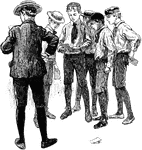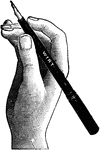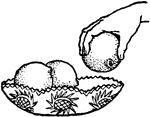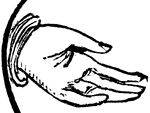
Hands of Vertebrates
A comparison of vertebrate hands. A, hand or anterior foot of the dog; B, that of the hog; C, that of…
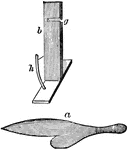
Scutching Sword
"Scutching-sword and Stand. A beating-implement used in scutching flax by hand. The sword a is held…

Seaming Machine
"Seaming-Maching. (a), vertical shaft and support, horizontally adjustable, and carrying at the top…

Chirotherium Tracks
An illustration of a fossil containing Chirotherium tracks. Chirotherium (also known as Cheirotherium)…
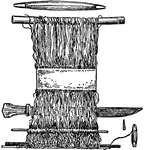
Hand Loom
An illustration of a hand loom. he earliest looms were vertical warp-weighted looms, with the warp threads…

Midshipman's Hitch
"Midshipman's Hitch -- Take two round turns inside the bight, the same as a half-hitch repeated; stop…

Bath Chair
A vehicle with a folding hood, which can be used open or closed, and a glass front, mounted on three…

Elastic Spiral Wings of the Gull
An illustration of elastic spiral wings of the gull. "a b, Anterior margin of the left wing; c d, Posterior…

Railway Turntable
"Industrial-railway Turn-table. a, circular base with channel for ball-bearing, showing ring of balls;…
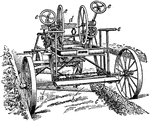
Road Machine
"Road-machine. a, telescopic axle for rear wheels; b, scraper delivering spoil between rear wheels;…

Knight and Captive
An illustration of a knight holding a prisoner with one hand and a sword with the other.
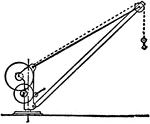
Fixed Hand Revolving Jib Crane
An illustration of a fixed hand revolving jib crane. A jib crane is a type of crane where a horizontal…
Indian Matchlock
The Matchlock was the first mechanism or "lock" invented to uncomplicate the firing of a hand-held firearm.
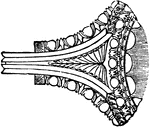
Plan of Ionic Antæ Capital from the Temple of Minerva Polias at Athens
The capital of the antæ and pilasters is without volutes, as is seen here. The shaft has no flutings;…

Ionic Antæ Capital from the Temple of Minerva Polias at Athens
The capital of the antæ and pilasters is without volutes, as is seen here. The shaft has no flutings;…

Old Point Lace Border
The old point lace border is a form of textile art that has a combination of the conventional treatment…
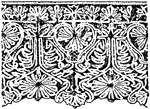
Old Point Lace Border
The old point lace border is a form of textile art that has a combination of the conventional treatment…
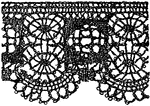
Modern Pillow Lace Border
The modern pillow lace border is a form of textile art that has a combination of the conventional treatment…
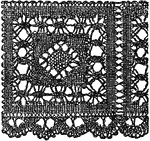
Modern Pillow Lace Border
The modern pillow lace border is a form of textile art that has a combination of the conventional treatment…
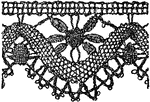
Modern Pillow Lace Border
The modern pillow lace border is a form of textile art that has a combination of the conventional treatment…

Power Cream Separator
A cream separator is device invented by Martin Wiberg to separate cream from milk (see also Gustaf de…
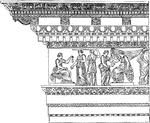
Corinthian Entablature from the Nerva at Rome
Simple styles, such as the Doric, which accorded so intimately with the whole disposition of the Grecian…

Graeco-Italic Hand-Hydria
This Graeco-Italic hand-hydria is made out of clay and is unpainted. It is smaller and a slenderer hydria…

Graeco-Italic Hand-Hydria
This Graeco-Italic hand-hydria is made out of clay and is unpainted. It is smaller and a slenderer hydria…

Quadrant Electrometer
An illustration of a quadrant electrometer. An electrometer is an electrical instrument for measuring…
!["A pipe of this nature fitted with a piece of glass so as to exhibit the reed (which is a "free reed") is shown in [the illustration]. Q is the wind-chest of the bellows, into which P is fitted. In the right-hand figure the upper part of the pope is removed, so as to show the reed more clearly. A plate of metal c c, has a slit but in it, in which the tongue I may just past. By means of a curved wire, r, projecting above the top of the pipe, and the play of the tongue may be controlled and the pipe tuned. The conical pipe, H, placed at the top, serves to increase the power of the sound". -Benson, 1891](https://etc.usf.edu/clipart/62100/62146/62146_reed_mth.gif)
Reed
"A pipe of this nature fitted with a piece of glass so as to exhibit the reed (which is a "free reed")…

Types of Files
"Files. a, cotter-file when large, and verge- or pivot-file when small; b, square file (parallel or…
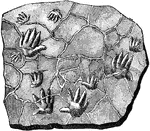
Chirotherium Tracks
Tracks of Chirotherium or "hand-beast" in Buntsandstein found in Hessbeg, Germany.
Fire Arrows of the 14th and 15th Centuries
"Fire-arrows, 14th and 15th centuries. An arrow formerly used, whether shot from a hand-bow or from…

Block Faulting, Sandia Mountains
The mass consists of crystalline rocks, shown by dots, covered by limestones and other sediments, which…

Wayland Valleys
Diagram illustrating the relation of the Dansville to the Wayland Valleys. The floor of the Wayland…

Man with Hat and Cane
An illustration of a man wearing a black top hat and holding a cane in his left hand.

Boy Sitting in Chair with Book
An illustration of a young boy sitting in a chair with a book in his hand.
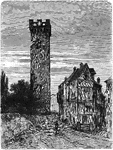
Tower of Goetz
Located in Heilbronn, a city in the north of Baden-Wirttemburg, Germany, is the tower of an old fortress…

Advantage Rebus
"A bird in the hand is worth two in the bush." Its better to have a small advantage rather than a greater…
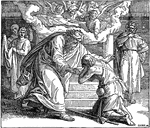
The Return of the Prodigal Son
"And he arose, and came to his father. But when he was yet a great way off, his father saw him, and…
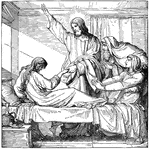
Christ Raising the Daughter of Jairus
"While he yet spake, there came from the ruler of the synagogue's house certain which said, Thy daughter…

The Raising of Lazarus
"And when he thus had spoken, he cried with a loud voice, Lazarus, come forth. And he that was dead…

The Feast of the Passover
"And thus shall ye eat it; with your loins girded, your shoes on your feet, and your staff in your hand;…
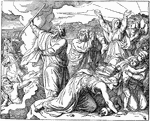
Pharaoh's Host Destroyed
"And Moses stretched out his hand over the sea; and Jehovah caused the sea to go back by a strong east…
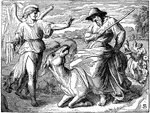
Balaam Met by the Angel of the Lord
"Then the LORD opened the eyes of Balaam, and he saw the angel of the LORD standing in the way, and…

Explanatory Diagram
1) The first or index finger. 2) The second or middle finger. 3) The third finger. 4) The fourth finger.…

Physiological Bases of the Visible Speech Symbols for Consonants
Physiological Bases of the Visible Speech Symbols - Consonants. In representing the consonant a peculiar…
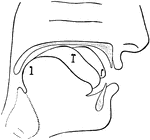
Physiological Bases of the Visible Speech Symbols for Vowels
Physiological Bases of the Visible Speech Symbols - Vowels. In representing the vowel classification…

Code of English Sounds
Chart illustrating 45 hand positions representing sounds in the English language as described in the…

Non-Vocal Primary Back Consonant
Consonants have a closed or narrowly expanded adjustment of the vocal organs, so that in their production…
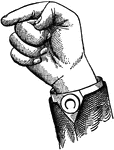
Non-Vocal Primary Top Consonant
Consonants have a closed or narrowly expanded adjustment of the vocal organs, so that in their production…

Non-Vocal Primary Point Consonant
Consonants have a closed or narrowly expanded adjustment of the vocal organs, so that in their production…

Non-Vocal Primary Lip Consonant
Consonants have a closed or narrowly expanded adjustment of the vocal organs, so that in their production…
